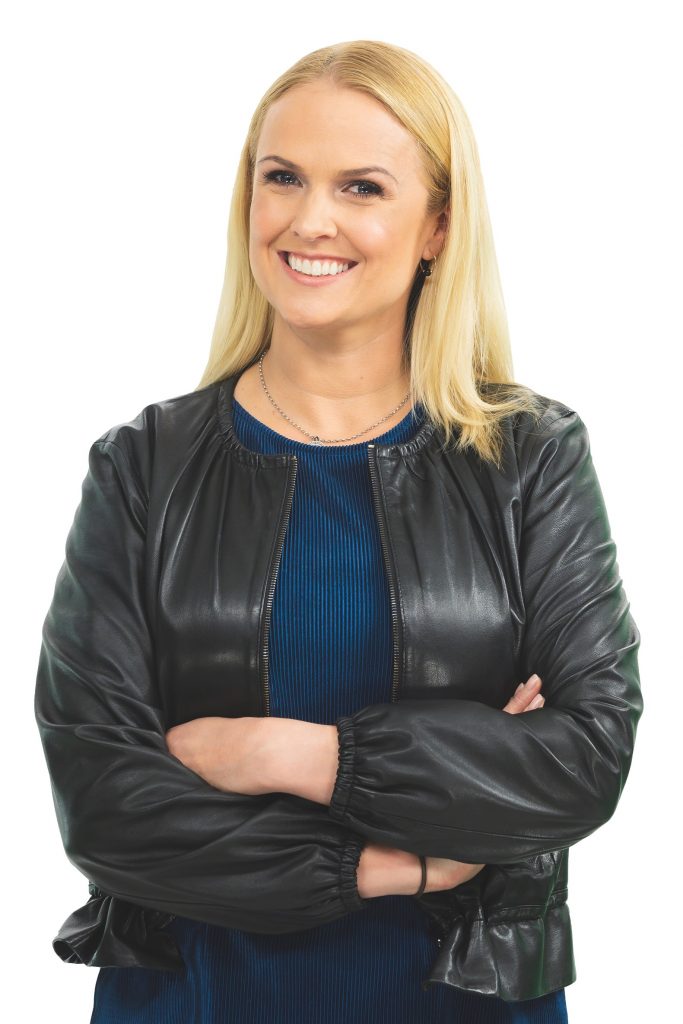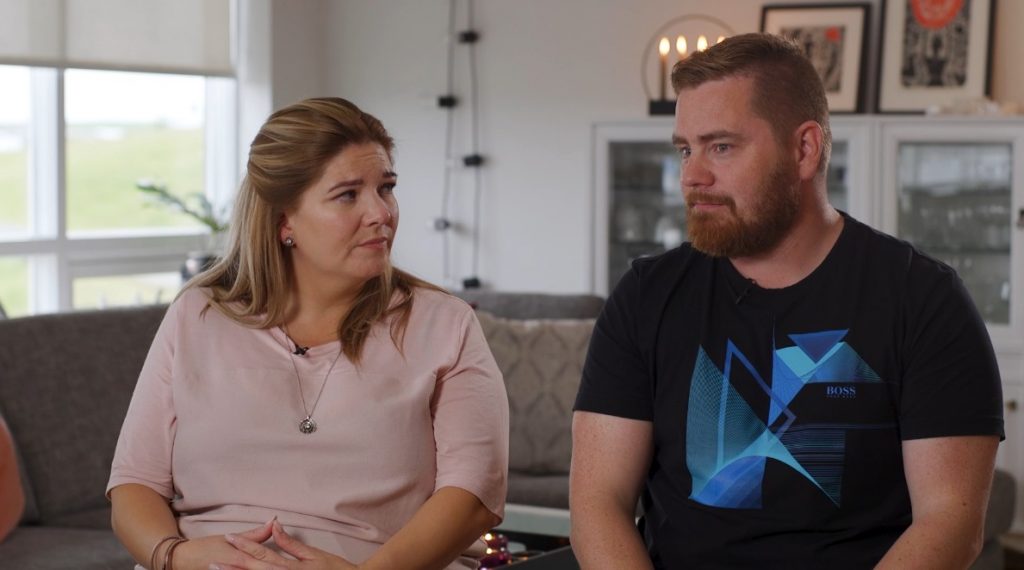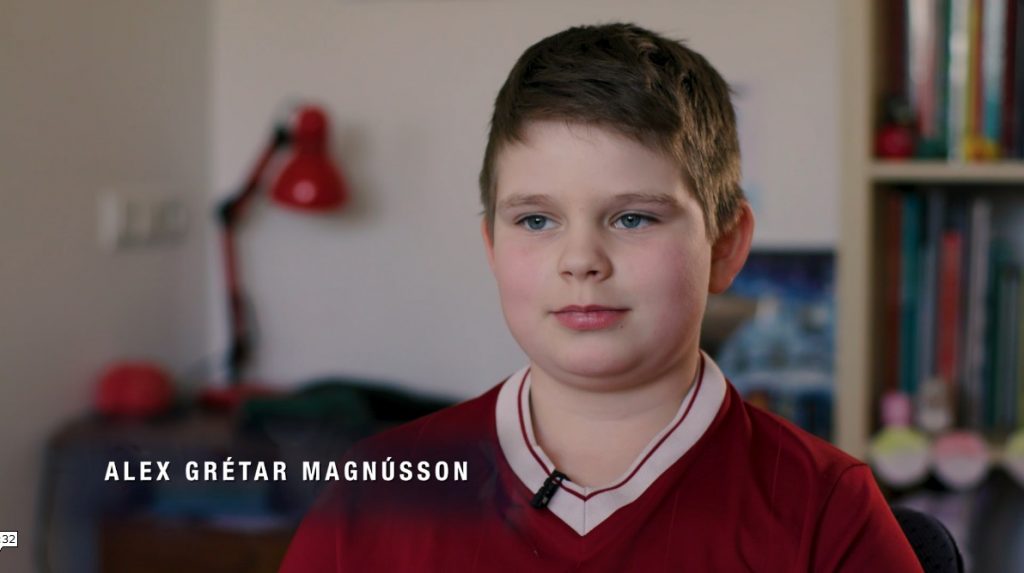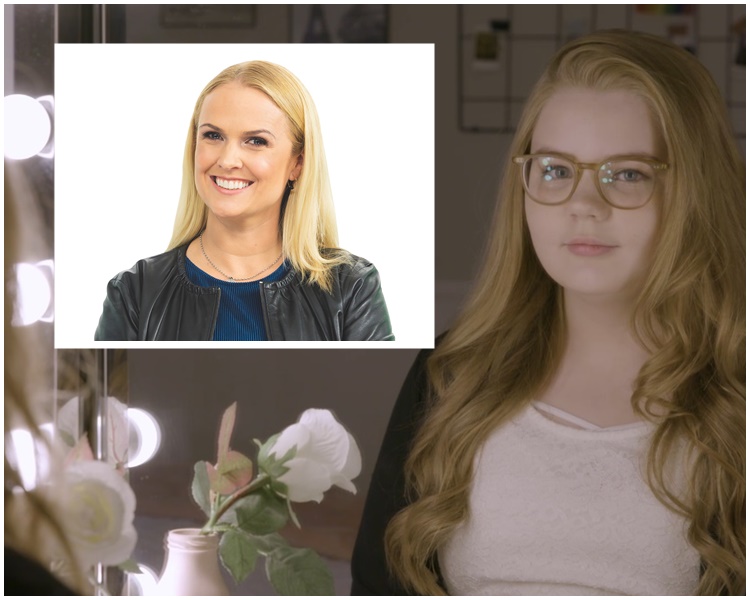Trans Children (Trans börn) is a documentary in three episodes that’s currently being shown on Icelandic TV channel Stöð 2 (Channel 2). In the documentary Sigrún Ósk Kristjánsdóttir follows four families of trans children for two years and the viewer gets to know their joys, sorrows and challenges during that time. The idea is not Sigrún’s own it was the documentary’s producer, Sveinn Benedikt Rögnvaldsson, who came to her four years ago and asked her to take part in this project.

“Right from the beginning I found this subject very interesting,” Sigrún says. “But at that time I was working on other projects so it was put on hold for about a year. Three years ago we started developing the idea, got it approved by our superiors and started meeting families with trans children to find the ones we were going to follow for the next two years. We had seen some interviews with trans children and their families in the media but we wanted to be able to follow the developments of their lives over a longer period.”
“It is a horrible retrogression that BUGL has had to limit it’s services,
especially when you think about how fast this group is growing. It’s extremely important that this group gets the best service available in every aspect.”
How did you go about choosing the families who are followed in the documentary?
“We got in touch with Sigríður Birna Valsdóttir, who is a counselor for the National Queer Organisation Samtökin ’78. She was the first name everyone we spoke to mentioned as the person who knew most about trans issues in Iceland,” Sigrún explains. “She pointed out some possible subjects for the documentary and we met a whole lot of families before we selected the four we follow in the documentary.”
It was always an option to back out
Was everyone you spoke to ready to take part in this project and willing to let you watch their families for two whole years?
“Yes, everyone we met was willing to take part,” Sigrún says. “They all took their time to think it over before they said yes, of course, as it is a very big step to take, but everyone agreed that there was a need for a documentary of this kind and most of them said that they wished they had been able to see a program like this before they had to tackle the experience of raising a trans child. The children were of course part of the decision and they had the final say.”
The four children in the documentary are of different ages, when the filming started the youngest one was seven and the oldest one seventeen, so they were all at different stages in their transitions. But did the kids never get cold feet and want to stop?
“No, not really,“ Sigrún says. “But it was perfectly clear right from the start that if they ever got uncomfortable with this they could back out. At the beginning we were following five kids but one of them wanted to quit quite early in the process and that was of course completely OK with us. The last thing we wanted was to put pressure on anyone to take part and of course a lot of things can change over the period of two years so that was very well underlined from us that they were doing this of their own free will, and the decision had to be theirs.”

They could all be the family next door
What was the most surprising thing you discovered int the process of making this documentary?
“I hav gotten this question before and I’m never quite sure how to say this
without sounding prejudiced,” Sigrún says and laughs. “But the most surprising thing was how completely normal these families are. They could all be the family next door and every single one of them was absolutely wonderful. One of the reasons we chose these families was that we knew that everyone could see themselves in them and relate to them. I was absolutely sure even before the first part was shown that nobody could watch it without rooting for these families and those kids. They are so sincere and tell their stories with such candor that they completely conquer your heart.”
Another thing that Sigrún says came as a surprise to her is that none of these children have experienced bullying at school or anywhere else. “That was an extremely pleasant surprise,” she says, smiling happily. “Children nowadays are so much further along than most of us grownups in embracing diversity. They accept that people are different in all kinds of ways and I find that wonderful and amazing. All the parents we spoke to told us that they had feared that the kids would be bullied if they were allowed to be who they are and dress as they pleased, they would be the target for bullying and not be accepted for who they are. They did not realize how much things have changed since they themselves were kids, twenty to thirty years ago.”

Recently there has been a lot of debate about the trans team that was active at BUGL (the psychiatric department for children and youngsters at the National Hospital) but is currently not opperating due to lack of professional employees. What does Sigrún think about that and how does she think it will affect trans kids in Iceland?
“It is a horrible retrogression that BUGL has had to limit it’s services,
especially when you think about how fast this group is growing. It’s extremely important that this group gets the best service available in every aspect. The people working at BUGL are doing their best but there is a lot more money needed for the institution for it to be able to function at it’s best capacity.”
“Before I saw the discussion I really believed that there were limits for what people were willing to say about others, especially children, but it seems that I was wrong.”
Asked if it is her experience that these kids are happy and that the obstacles of the past are slowly disappearing for trans children and youngsters, Sigrún replies that it is here feeling that is is getting easier than it used to be. “But obviously there are still all kinds of complications, especially for young adults. It’s always difficult to be entering adulthood and it’s even more difficult for youngsters with additional things to work through, so the last thing this group of children needs is opinions and prejudices from people who don’t know the first thing about what they are dealing with.”
Horrifying to see what people are ready to say
Speaking of that, even before the first part of Trans Children aired on Stöð 2 there was a harsh reaction towards the show from a group of people who obviously had no idea what they were talking about. Sigrún admits that that came as a bit of a shock.
“Before I saw the discussion I really believed that there were limits for what people were willing to say about others, especially children, but it seems that I was wrong,” she says. “I was really shocked to see this and it was also astounding how much people were ready to discuss things they obviously had not the slightest idea about. But that made it even more clear how necessary this documentary is. It’s apalling how little people know about these issues and how stupid many of their arguments are. The good news is that since the first part of Trans Children aired last sunday these discussions seem to have wanished. That makes me very happy and is the final confirmation of how necessary this documentary is and how right we were in making it. The most beautiful comment I have gotten about the documentary was that it made it perfectly clear that we had to accept diversity and let people be who they are in all cases, it makes us all richer as human beings to accept and embrace everyone.”
The first part of Trans Children is now available to watch in it’s entirety at
visir.is.The second part will be shown at Stöð 2 tonight, Sunday 16th of
February and the last part next Sunday, the 23rd of February.


